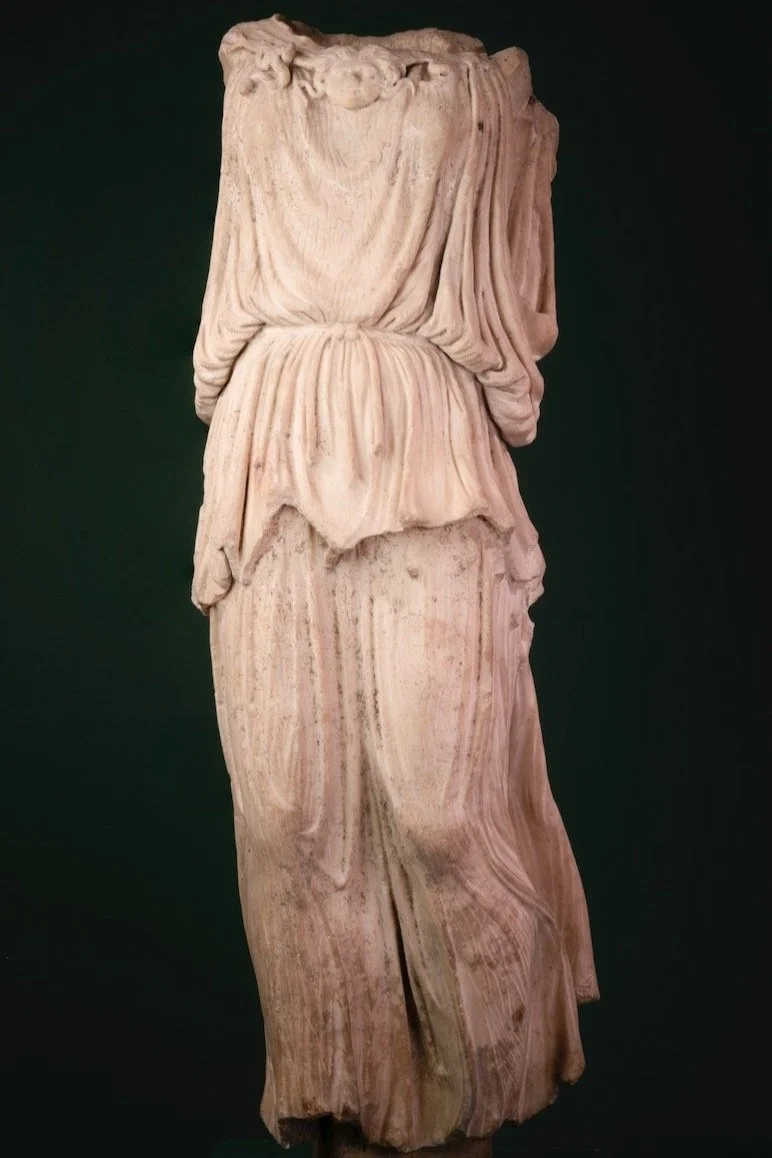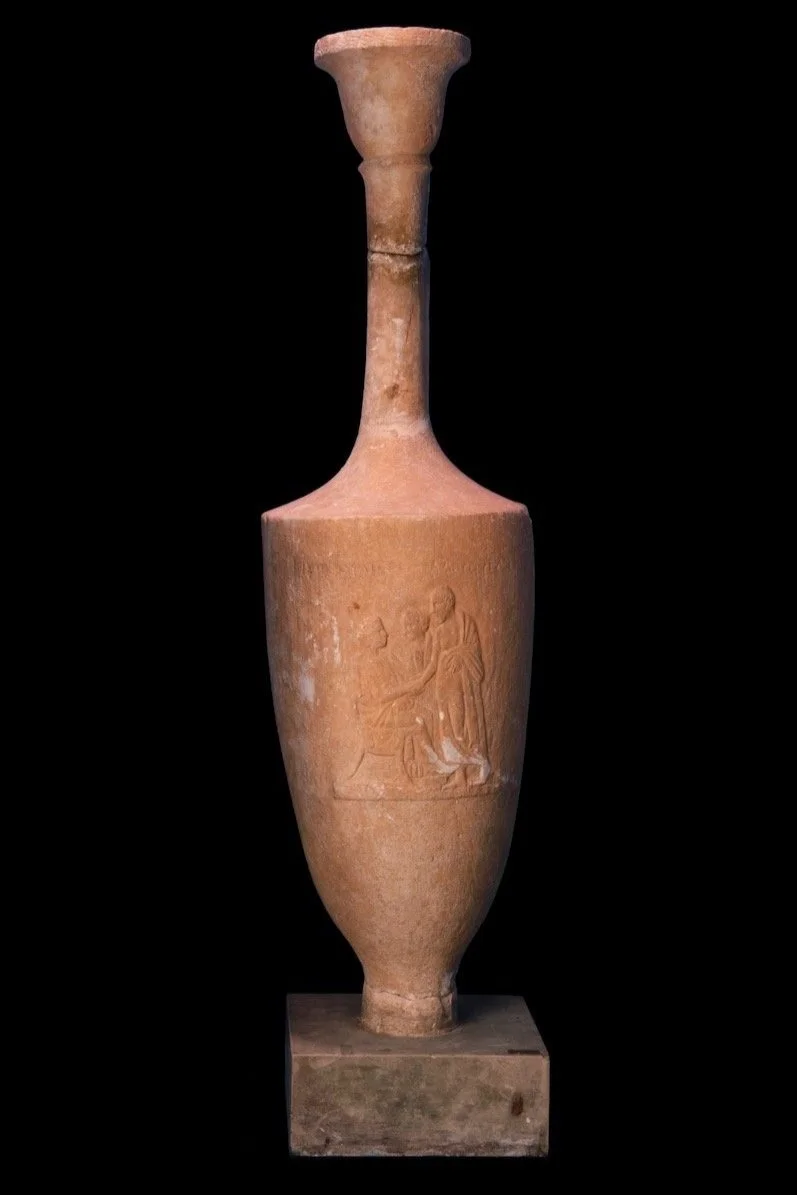Classical Collection
Statue of Minerva Victoria, 2nd century CE.
Athenian tombstone in the shape of a lekythos (a vessel for oil and perfume used in funerary rituals) 4th century BCE.
Glencairn’s Classical collection consists of more than five hundred objects from ancient Greek, Roman, Cypriot, Etruscan, and other Mediterranean cultures, ranging in date from the Bronze Age through the Late Roman period. Jewelry comprises over half of the objects; the collection also includes stone sculpture, pottery, terracotta figures and lamps, bronzes, glass vessels, coins, and bone and ivory pieces.
Much of the pottery, along with a handful of other pieces, was acquired in 1878 when John Pitcairn (1841–1916) and Bishop William Henry Benade (1816–1905) went on a collecting tour in Europe and the eastern Mediterranean to create a museum for the newly founded Academy of the New Church in Philadelphia. Most of the other objects in the collection were purchased by Raymond Pitcairn, primarily in the 1920s and 1930s, including the jewelry collection.
The best-known piece is an almost life-sized marble statue of Minerva Victoria, an eye-catching and well-preserved Roman statue of the goddess Minerva in the guise of Victory (a concept that ancient Greeks and Romans deified). Other highlights include a Classical Athenian tombstone in the form of a lekythos, several Cypriot portrait heads from the Hellenistic period, three Roman Imperial period funerary portraits from Palmyra, and two Late Roman sarcophagi.
The collection is exhibited in two galleries. The Greek gallery emphasizes ancient Greek ritual practices, including ways that religion intersected with aspects of everyday life in personal adornment, athletics, wine-drinking, and funerary ritual. The Roman and Early Christian gallery illustrates the diversity of religions that were present in the Roman empire, including traditional Roman religion, early Christianity, and the Roman adoption of Egyptian religion.
Read about the Classical Collection in Glencairn Museum News:
Death and the Athenian Family: An Athenian Funerary Lekythos
Glencairn’s Minerva Victoria in Light of the Discovery of a 5th-Century B.C. Original of Athena Nike
Recommended reading:
Romano, David Gilman, and Irene Bald Romano. Catalogue of the Classical Collection of the Glencairn Museum. Bryn Athyn, PA: Academy of the New Church, 1999.


